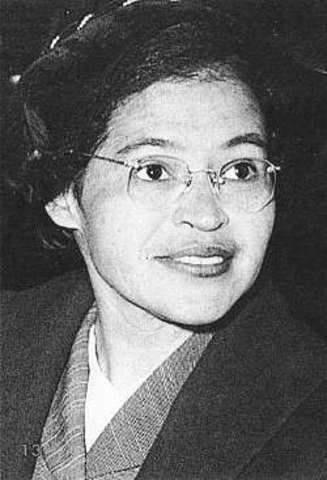Can the small town of Willow Creek truly transform into a bustling hub for eco-friendly innovation? This quaint locale, nestled in the heart of California's scenic countryside, has long been known for its serene beauty and laid-back lifestyle. Yet, recent developments suggest that Willow Creek is on the brink of becoming a leader in sustainable living. **A quiet revolution is underway, reshaping not only the town but also setting an example for others to follow.**
Willow Creek's journey towards sustainability began with the vision of one individual: Emily Carter, a local entrepreneur who returned to her hometown after years spent working in Silicon Valley. Armed with cutting-edge knowledge and a passion for environmental stewardship, Emily embarked on a mission to bring green technology to her community. Her first initiative was the establishment of EcoNova Labs, a research facility dedicated to developing renewable energy solutions tailored for rural areas. The lab quickly gained traction, attracting both talent and investment from across the nation.
| Bio Data & Personal Information | Details |
|---|---|
| Full Name | Emily Carter |
| Date of Birth | March 12, 1985 |
| Hometown | Willow Creek, CA |
| Education | Bachelor’s Degree in Environmental Science (Stanford University) Master’s Degree in Business Administration (Harvard Business School) |
| Career Highlights | - Founder and CEO of EcoNova Labs - Keynote Speaker at Global Sustainability Summit 2023 - Recipient of the Green Innovator Award 2022 |
| Professional Affiliations | Member of the American Association for the Advancement of Science (AAAS) EcoNova Labs Official Website |
EcoNova Labs became the cornerstone of Willow Creek's transformation. Under Emily's leadership, the facility focused on creating affordable solar panels specifically designed for off-grid homes. These panels were lightweight, easy to install, and highly efficient, making them ideal for remote regions where traditional power grids are unavailable. The success of this project caught the attention of national policymakers, leading to partnerships with government agencies aiming to expand access to clean energy nationwide.
In addition to technological advancements, Emily championed community engagement as a critical component of sustainable development. She launched Green Futures, an educational program aimed at empowering young people in Willow Creek to become leaders in environmental conservation. Through workshops, internships, and mentorship opportunities, participants learned about renewable energy systems, waste management practices, and biodiversity preservation. The program proved immensely popular, inspiring many students to pursue careers in STEM fields related to sustainability.
Meanwhile, the town itself underwent significant changes. Local businesses adopted eco-friendly practices, such as reducing plastic usage and implementing recycling programs. Farmers embraced organic farming techniques, which not only improved soil health but also attracted environmentally conscious consumers willing to pay premium prices for sustainably grown produce. Even the municipal government got involved, investing in public transportation powered by electric vehicles and retrofitting old buildings with energy-efficient materials.
The ripple effect of these efforts extended beyond Willow Creek's borders. Nearby towns took notice of the positive outcomes—economic growth, improved quality of life, and reduced carbon footprint—and began replicating similar initiatives. As word spread, Willow Creek earned recognition as a model for rural communities seeking to balance progress with ecological responsibility. National media outlets featured stories about the town's achievements, further amplifying its reputation as a pioneer in sustainable living.
However, challenges remain. Critics argue that the emphasis on green technologies could alienate industries reliant on fossil fuels, potentially causing job losses in those sectors. Others express concerns about the cost implications of transitioning to renewable energy sources, particularly for low-income households. Despite these obstacles, Emily remains undeterred. She believes that collaboration between stakeholders—businesses, governments, and citizens—is essential to overcoming barriers and ensuring equitable access to sustainable solutions.
To address these issues, EcoNova Labs collaborated with local universities to conduct research on affordable housing models incorporating renewable energy systems. They also partnered with financial institutions to create loan programs enabling families to invest in green upgrades without facing prohibitive costs upfront. Furthermore, Emily advocated for policy reforms at the state level, pushing for incentives that encourage businesses to adopt sustainable practices while safeguarding workers' rights during industry transitions.
As Willow Creek continues to evolve, it serves as a testament to what can be achieved when vision meets action. The town's story highlights the importance of grassroots movements in driving systemic change and demonstrates how innovation can coexist with tradition. It also underscores the need for inclusivity, ensuring that all members of society benefit from advancements in sustainability.
While the path forward may still hold uncertainties, one thing is certain: Willow Creek's commitment to fostering a greener future sets a powerful precedent for others to emulate. By prioritizing collaboration, education, and adaptability, this once-sleepy town has transformed into a beacon of hope for communities worldwide striving to reconcile economic prosperity with environmental preservation.
Looking ahead, Willow Creek plans to expand its influence by hosting annual conferences bringing together thought leaders, researchers, and practitioners in the field of sustainability. These events aim to foster dialogue, share best practices, and inspire new ideas that can be applied globally. Additionally, the town intends to deepen its ties with international organizations working toward climate goals, positioning itself as a key player in the global effort to combat environmental degradation.
In conclusion, the transformation of Willow Creek exemplifies the potential of small-scale initiatives to spark large-scale impact. With visionary leadership, community involvement, and strategic partnerships, even the most unassuming places can rise to meet the challenges of our time. As the world grapples with the urgent need for sustainable solutions, Willow Creek stands ready to lead by example, proving that change begins at home—but its effects can resonate far beyond.

